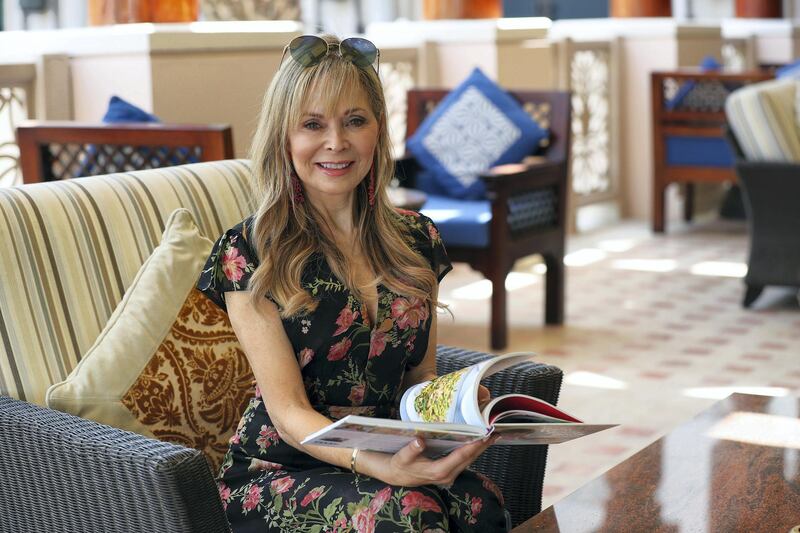Her latest book – self-published and marketed through social media – sold out in fewer than three months in the UK and has quickly become one of the most popular of her illustrious career. But despite it boasting 120 mouth-wateringly tempting recipes, Annabel Karmel is the first to admit that the method of eating she's promoting in her Baby-Led Weaning Recipe Bookmay not be for everyone. "This book's different," she says. "The recipes allow for the children to feed themselves, rather than having their parents do it."
Karmel has written 43 books, including the now classic Complete Baby & Toddler Meal Planner. It sold more than two million copies and has been translated into dozens of languages. So, after spending 25 years creating easy, nutritious, family-friendly meals for children, if anyone has earned the right to call herself the leading authority on feeding little ones, she has.
"Baby-led weaning, which means allowing children to eat on their own instead of their parent spoonfeeding them, can start at six months. But the thing is, it might not suit everyone," says Karmel. "Not every child develops at the same rate, not every child has the same hand-eye coordination to allow for baby-led weaning. Some babies at six months are reasonably okay at feeding themselves and others will never get food in their mouth, but all babies need food from six months; they have to have solids. So if a parent wants to try this method of feeding, an option can be to use the recipes in this book as a guide and combine with purees.
______________________
Read more:
Yum by Mum: nutrition for the little ones, delivered straight to your door
[ Advice for UAE mums who want to re-enter the workplace ]
[ Mothers in UAE find choosing sunscreen is a conundrum ]
______________________
"Every mother should be allowed to make up her own mind as to how to feed her baby,"
she says.
It's this flexibility that has allowed Karmel to become so finely attuned to what mothers and fathers are looking for when it comes to how, and what, to feed their children.
The recipes in her new book, which is chock-full of advice on how to safely introduce babies to finger food, while still managing to feed other, older members of the family, are what Karmel is known for.
"These are fantastic, protein-based finger foods that are delicious and incorporate ingredients children should have in their diets," she says, pointing to recipes like lentil dal, chicken and kale balls and a frittata filled with hidden vegetables.
"Kids become fussy eaters once they hit one," says Karmel, who has three children of her own, all of whom she describes as once being picky when it comes to food. "That first year, kids are pretty good about food, but once they hit one and become more mobile, they are too excited to sit still. There's so much for them to do and explore, the last thing they want to do is sit in a highchair and be fed. So you have to attract them with food, you have to be a bit of a psychologist, with tricks up your sleeve."
Pretend the child can't have the food on the parent's plate, for example, says Karmel. Or serve food in small portions in tiny ramekins rather than putting it all on one big plate. Or try one of her most popular tricks: blend veggies into tomato sauces. By making food attractive, a child can be enticed, says Karmel. "Otherwise, it's return to sender."
Karmel admits that a combination of the more traditional way of feeding a baby – through spoon-fed purees – together with finger foods to introduce baby-led weaning, is her favourite way of feeding babies. "This way, you're making sure that your baby is getting the nutrients they need. Yes, I know this isn't true baby-led weaning, but you have to do what feels right for you as a parent."
As to how she continues to come up with interesting recipes after 43 books, Karmel credits both other mothers for inspiring her, and Instagram for propelling her in the
right direction.
"I'm a big Instagrammer," admits Karmel. "So when I come up with a recipe and I post it on Instagram first, I can tell immediately, after about 15 minutes at most, how popular that recipe will be with people.
"I did something the other day that was so simple: homemade chicken nuggets. I just coated the cut-up chicken with pesto first, then dropped each piece in a bag that was filled with crushed-up rice krispies mixed with parmesan, then baked them in the oven. That was it. Everybody loved that; it's so quick and easy."
What is baby-led weaning?
Baby-led weaning is not for the faint of heart, not least because of the inevitable mess it makes or the choking hazard it might present.
A parentingtrend that has resulted in some fierce debate, baby-led weaning does away with traditional purees, so no more apple sauce and sweet potato mixes and runny porridge and cajoling a child to open his or her mouth through the decades-old aeroplane spoon game.
Instead, the method stipulates that babies feed themselves their first mouthfuls of solid food at six months, so they figure out what food is and how to get it into their mouths. Purees are replaced with finger foods that are easy to grab, like steamed carrot sticks or broccoli florets, hunks of ripe banana, soft cooked apples and even skinless chicken drumsticks.
The idea is that children will learn to self-feed, become more adventurous eaters with a sense of portion control, fine-tune their motor development and hand-eye coordination and as a bonus, get to partake in the ritual of a family meal.





